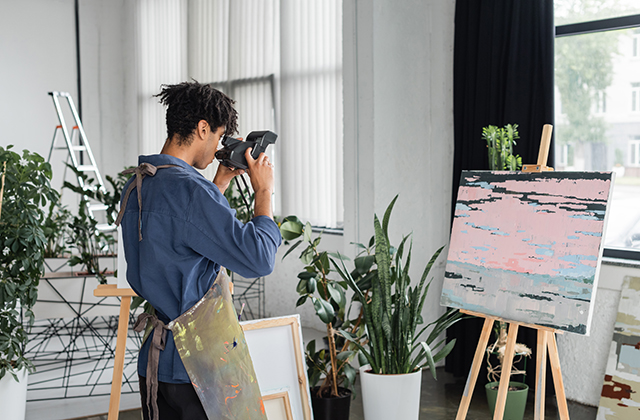Introduction
Artificial Intelligence (AI) is transforming the animation industry, from pre-production to final rendering. One of the most significant areas experiencing change is storyboarding, the foundation of visual storytelling. Traditionally, storyboarding required meticulous sketching, framing, and composition to set the scene for animators and directors. However, AI-driven tools are now streamlining this process, enabling faster, more accurate, and creatively expansive approaches to storytelling.
For professionals like an animatics artist Sydney, AI is an exciting development that enhances productivity while expanding creative possibilities. This article explores how AI is reshaping storyboarding, its advantages in animation, and what this means for the future of visual storytelling.
AI’s Role in Modern Storyboarding
1. Automating Initial Sketches and Layouts
AI-powered software can now generate rough sketches based on script inputs, dramatically reducing the time required for initial drafts. Tools like Deep Dream Generator, Storyboard Pro, and Runway ML use AI to analyze scripts and suggest compositions, angles, and framing. This allows storyboard artists to focus on refining artistic elements rather than spending hours creating basic layouts.
For an animatics artist Sydney, this automation means faster turnaround times without sacrificing creative input. By leveraging AI-generated layouts, artists can devote more time to character design, scene depth, and storytelling nuances.
2. Enhancing Accuracy with AI-Assisted Composition
One of the key challenges in storyboarding is ensuring consistent character proportions, perspective accuracy, and effective shot composition. AI-assisted tools can analyze previous storyboard panels and ensure that proportions remain consistent throughout a sequence.
For instance, AI can:
- Automatically adjust character sizes based on scene depth.
- Suggest optimal framing based on cinematic principles.
- Improve scene transitions by predicting natural movement flow.
This precision benefits professionals working on tight schedules, allowing them to maintain visual coherence in their projects.
3. AI-Driven Scene Pre-Visualization
Pre-visualization is a critical step in animation, allowing directors to see how scenes will flow before full production begins. AI tools are revolutionizing this process by converting static storyboards into dynamic animatics almost instantly.
For instance, software like Adobe Sensei and Kavout AI can:
- Convert hand-drawn storyboards into animated pre-visualizations.
- Add simulated camera movements to enhance scene dynamics.
- Optimize lighting and shading based on script context.
This capability is particularly beneficial for those involved in animatics artist Sydney projects, where clients often require early visual representations before committing to full-scale animation.
Advantages of AI in Storyboarding
1. Increased Efficiency and Cost Reduction
With AI-powered automation, storyboarding no longer requires weeks of manual sketching and revisions. AI can generate multiple variations of a scene in seconds, allowing directors to choose the best option without extensive redrawing.
This efficiency translates to reduced production costs, especially for studios operating on tight budgets. AI’s ability to streamline pre-production processes means that more resources can be allocated to refining the final animation.
2. Expanding Creative Horizons
AI is not just a productivity tool—it is also a source of inspiration. AI-driven storyboard tools can suggest unconventional angles, innovative transitions, and unique scene compositions that may not have been considered otherwise.
Artists can:
- Experiment with different animation styles using AI-based texture and shading tools.
- Use AI to simulate real-world physics for more realistic motion sequences.
- Apply AI-generated filters to explore alternate visual interpretations of a scene.
3. Real-Time Collaboration and Cloud Integration
Modern AI-driven storyboard software is often cloud-based, allowing teams to collaborate in real-time. This enables:
- Remote teams to work together seamlessly.
- Directors and artists to provide instant feedback.
- Multiple storyboard versions to be stored and accessed easily.
For freelancers and professionals like an animatics artist Sydney, AI-powered cloud tools provide the flexibility to work with international clients without geographical constraints.
AI and the Future of Storyboarding in Animation
1. AI-Powered Virtual Reality (VR) Storyboarding
The integration of AI with VR is set to revolutionize pre-visualization. With VR storyboarding, artists can:
- Step into a virtual space and arrange characters dynamically.
- Simulate real-world camera movements.
- Adjust lighting and perspective interactively.
This immersive experience enhances storytelling by allowing animators to visualize sequences in a 3D environment before production begins.
2. Personalized AI Storyboarding Assistants
Future AI-driven assistants will likely adapt to individual artist styles, offering:
- Intelligent suggestions based on past projects.
- Automated error detection in compositions.
- Adaptive learning to refine output based on artist feedback.
As AI evolves, it will become a more integral part of the creative process, working alongside human artists rather than replacing them.
3. Ethical Considerations and Artistic Integrity
While AI provides numerous benefits, it also raises questions about artistic integrity. Studios must ensure that AI-generated content does not overshadow human creativity. Instead of viewing AI as a replacement, it should be seen as a tool that enhances traditional techniques and allows artists to push boundaries further.
Conclusion
AI is undeniably transforming the world of animation storyboarding by enhancing speed, precision, and creative potential. From automated sketch generation to dynamic pre-visualization, AI-driven tools are making storyboard creation faster and more innovative than ever before.
For professionals, including an animatics artist Sydney, embracing AI means working smarter, not harder. By leveraging AI’s capabilities, artists can focus on refining storytelling elements while allowing technology to handle time-consuming tasks.
As AI continues to evolve, it will not replace storyboard artists but instead become an essential part of the creative workflow, unlocking new possibilities in animation and film production. The future of storyboarding is a blend of human ingenuity and AI-driven efficiency, paving the way for a new era in animation storytelling.

